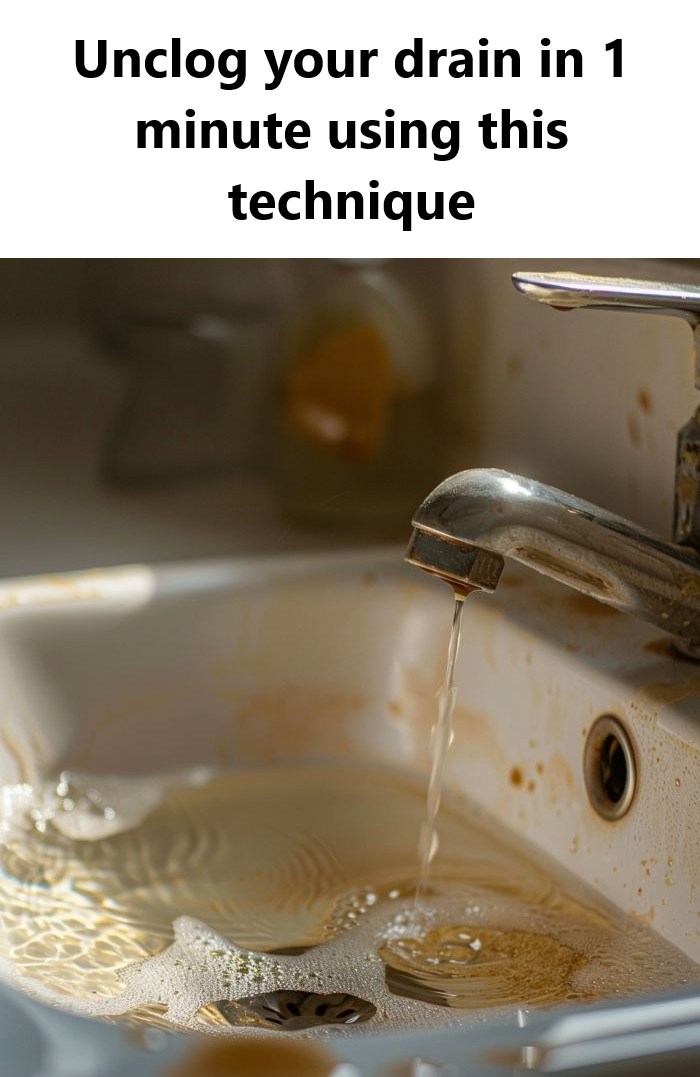ADVERTISEMENT
#### 4. **Cover the Drain:**
– If possible, cover the drain with a stopper or rag to keep the reaction contained. The buildup of pressure will help push the debris out of the pipes and clear the clog.
#### 5. **Wait for 1 Minute:**
– Allow the mixture to sit for about 1 minute. This gives the baking soda and vinegar time to work their magic, breaking down the clog and loosening any gunk that has built up in the pipes.
#### 6. **Flush With Boiling Water:**
– After the 1-minute wait, take your boiling water and carefully pour it down the drain. The hot water helps flush the loosened debris and will clear the pipe of any remaining buildup.
—
### **Why This Technique Works:**
The combination of baking soda and vinegar creates a natural chemical reaction that breaks down grime, grease, and other substances that often cause clogs. Here’s why this technique is so effective:
– **Baking Soda:** Baking soda is mildly alkaline and abrasive, making it an excellent natural cleaner. It helps break down fats, oils, and organic matter that can accumulate in pipes.
– **Vinegar:** Vinegar is acidic, which helps dissolve mineral deposits, soap scum, and other debris. It also neutralizes odors in the drain, leaving your pipes smelling fresh.
– **Boiling Water:** Hot water is the key to flushing out the debris after the baking soda and vinegar have done their work. It helps dissolve stubborn materials and pushes the loosened particles through the pipes.
—
### **Additional Tips for Drain Maintenance:**
If you’ve successfully unclogged your drain using this technique, there are a few ways to keep your drains flowing freely and prevent future clogs:
– **Regular Maintenance:** Make this a habit by clearing your drains once a month with the baking soda and vinegar method. This helps keep your pipes free from grease, soap scum, and debris.
– **Avoid Pouring Grease Down the Drain:** Never pour grease, oils, or fats down the drain as they can solidify and cause blockages over time.
– **Use a Drain Strainer:** Place a drain strainer in your kitchen and bathroom drains to catch food particles and hair, which are common causes of clogs.
—
### **When to Call a Plumber:**
While this method works great for most minor clogs, there are times when professional help is needed. If your drain is still clogged after using this technique, it might indicate a more serious issue, such as a deep blockage or damage to the pipes. In these cases, it’s best to call a plumber to avoid further complications.
—
### **Conclusion:**
Clogged drains don’t have to be a major hassle. With this simple, natural technique, you can unclog most drains in just one minute using baking soda, vinegar, and hot water. It’s an effective, eco-friendly solution that’s gentle on your pipes and the environment. Plus, it’s a great way to maintain your drains and keep your plumbing system running smoothly.
By adding this quick and easy method to your cleaning routine, you’ll save time, money, and avoid the use of harsh chemicals. So, next time you face a clogged drain, reach for these common household ingredients and enjoy the satisfaction of a freely flowing drain in just minutes!
ADVERTISEMENT
